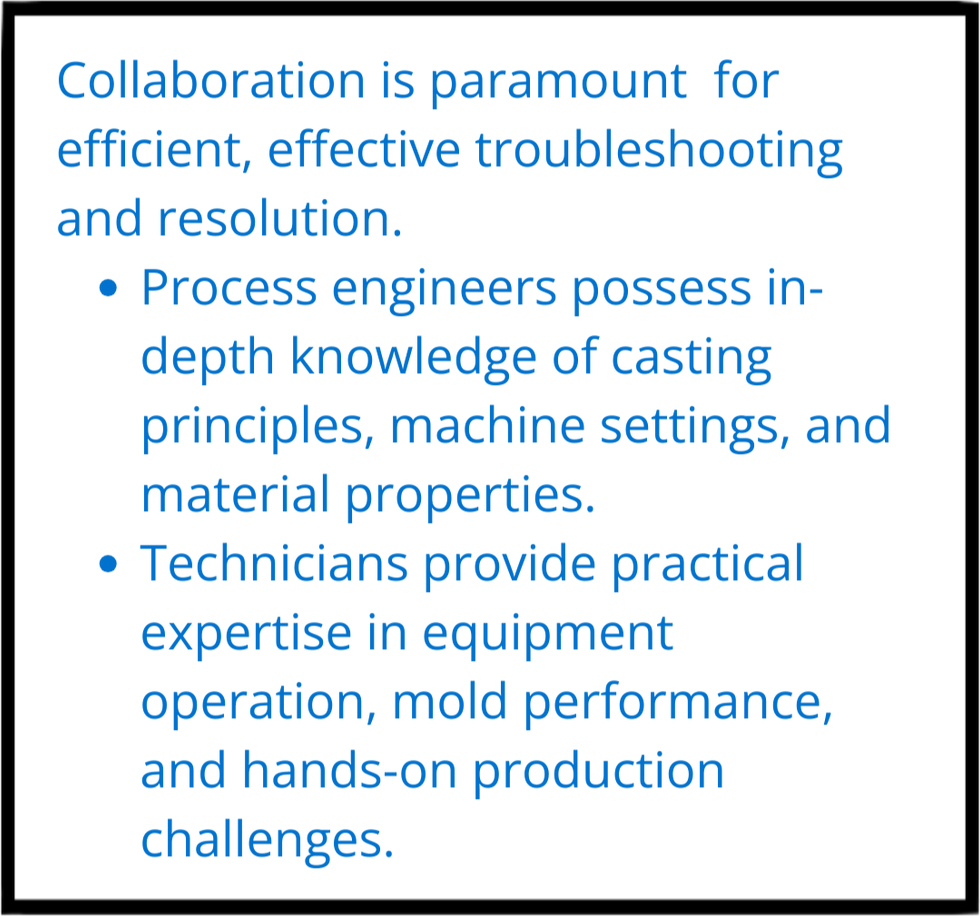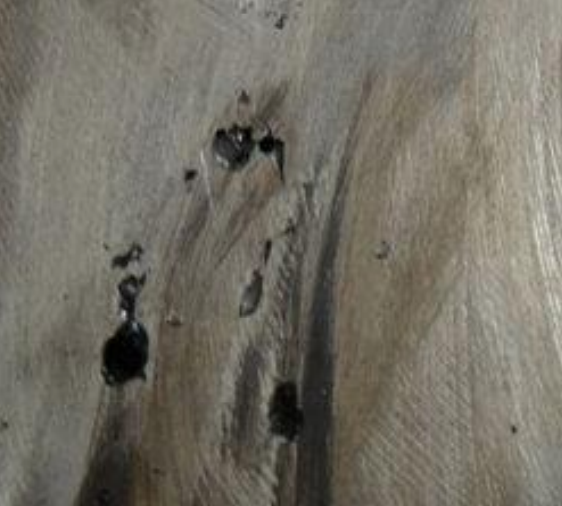The Spiderweb Effect: How Die Casting Defects and Solutions are Interconnected
- Hill and Griffith

- Aug 28, 2025
- 4 min read
Troubleshooting die casting issues is rarely straightforward. Instead, it resembles the intricate structure of a spiderweb, where each thread represents a potential cause,
underlying factor, or interconnected process.

Similar to how a spider detects and reacts to movements on its web, skilled operators and process engineers must analyze a complex network of variables to accurately detect, troubleshoot, and resolve defects with precision. This concept, called the Spiderweb Effect, highlights how different elements of the die casting process are interwoven and understanding these connections enhances problem-solving efficiency.
The Complexity of Troubleshooting in Die Casting
Die casting is a complex process that relies on multiple interdependent factors – such as mold design, injection pressure, mold temperature, alloy composition, injection speed, cooling rate, venting system, die casting machine settings, die lubrication, mold material and wear, and post-cooling and ejection – all working together to produce high-quality castings. Because these elements are interconnected, understanding their relationships is essential for effective troubleshooting.
A single defect can stem from various sources, and a problem in one factor can lead to defects that might initially seem unrelated.

Among many possible examples:
A slight decrease in mold temperature can affect the flow rate of molten metal, which can cause Poorfill or Nonfill.
Inconsistent pressure during the injection process can lead to porosity or flash.
A change in material composition can cause surface defects or inclusions.
A change in one process parameter can cause multiple issues that initially seem unrelated.
✔️ Key takeaway: Troubleshooting in die casting requires a deep understanding of how each factor influences the others and identifying which part of the process needs adjustment. It involves looking at the system holistically rather than isolating individual issues because addressing a problem in one area can often resolve multiple related defects. This approach both improves efficiency and leads to more sustainable solutions in the long term.
A Comprehensive Approach to Multiple Potential Causes
Consider a scenario in which a casting exhibits shrinkage porosity. Since the root cause of the voids, whether on the surface or inside the casting, may not be immediately obvious, a comprehensive approach is necessary to thoroughly analyze and identify all potential causes.
Impact of improper gating design: Improper gating can result in uneven metal distribution and localized cooling, leading to cavities or voids as the metal solidifies.
Impact of insufficient pressure during solidification: Insufficient pressure results in incomplete filling, causing gaps, voids, and defects in the final casting as it cools and contracts.
Impact of excessive mold temperature: High mold temperatures can slow down the cooling rate, leading to uneven solidification and resulting in shrinkage porosity.
Impact of alloy composition: Alloys with higher shrinkage rates or high gas content are more prone to forming porosity during solidification.
Impact of cooling rate: The rate at which the metal cools and solidifies impacts porosity formation. If the cooling rate is too slow, it can lead to shrinkage and internal voids.
Impact of mold design and venting: If the mold has poor venting or inadequate design to allow gas to escape, trapped gases can contribute to porosity.
✔️ Key takeaway: Effective troubleshooting goes beyond addressing the visible system by demanding a thorough examination of the interconnected factors that contribute to the defect. Only through this approach can a comprehensive solution target the root cause.
Recognizing Patterns and Applying the Spiderweb Effect
It is crucial to recognize patterns and connections between defects and process variables. By understanding how factors such as temperature, pressure, and material composition interact, operators and process engineers can more effectively identify the root causes of defects.
Key Strategies for Effective Troubleshooting in Die Casting
Collaborate. Leverage the combined expertise of process engineers and technicians for more efficient and accurate issue resolution.
Identify Root Causes. Instead of reacting to surface-level defects, investigate underlying factors such as temperature fluctuations, material contamination, or mold wear.

Map Process Interdependencies. Be aware of how altering one parameter affects the entire casting system to avoid unintended consequences.
Test and Adjust Incrementally. Implement minor, precise adjustments to enhance problem identification accuracy.
Utilize Data and Monitoring Tools. Real-time process monitoring, X-ray inspection, and thermal imaging can help pinpoint defects before they become widespread issues.
Document and Standardize Solutions. Maintain detailed records of defects and resolutions to support ongoing process improvement, knowledge-sharing, and best practices.
✔️ Key takeaway: Collaborating and gaining a deeper understanding of patterns and relationships enable precise process adjustments that result in enhanced quality control, minimized waste, and more consistent results in production.
Applying the Spiderweb Effect to Common Die Casting Defects
The Spiderweb Effect can be used to identify and address common die casting issues by highlighting key factors and their interconnected impact on the process.
Porosity | Linked to gas entrapment, shrinkage, or contamination | Adjust venting, pressure, or alloy composition |
Cold Shuts | Caused by insufficient metal flow or premature solidification | Optimize injection speed and temperature |
Flash Formation | Results from excessive injection pressure or mold misalignment | Adjust clamping force and tool maintenance |
Surface Defects | Stems from mold wear, improper coatings, or temperature inconsistencies | Conduct regular mold maintenance and thermal management |
✔️ Key takeaway: Effective troubleshooting involves identifying and addressing die casting issues by recognizing the interconnectedness of key factors in the process. Doing so leads to immediate solutions to keep operations running smoothly and focuses on long-term resolutions to improve stability and prevent recurring defects.
Final Thoughts
Die cast troubleshooting demands a comprehensive approach that acknowledges defects arise from a network of interdependent factors rather than isolated issues. Successfully identifying and resolving these defects requires a combination of experience, data analysis, and a structured problem-solving methodology.
By embracing the Spiderweb Effect and fostering strong collaboration among process engineers and technicians, teams can gain a deeper understanding of how casting variables interact, enabling faster root cause identification and more effective corrective actions. A systematic, data-driven approach, combined with open communication and shared expertise, ensures continuous process improvement, minimizes waste, and drives the production of high-quality castings with greater consistency.
Hill & Griffith Resources
Training Resources
EC-410 Process Control
EC-415 Thermal Design and Control
EC-515 Die Cast Defects
Contact Us
Email our experts: sales@hillandgriffith.com
Call our office: 1.800.543.0425
24-hour support: 513.291.1075









Comments